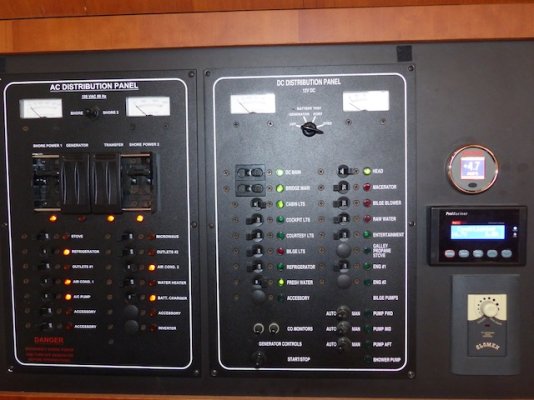PocketAces
Veteran Member
- Joined
- Dec 25, 2019
- Messages
- 45
- Location
- Canada
- Vessel Name
- Pocket Aces
- Vessel Make
- Mainship 34T '08
Hi, I have a 34T '08 and most of the LED lights on the 12V breaker anel (and some on the 120V breaker panel as well) have died. On the old Yahoo groups there were several posts on this topic, but alas, Yahoo groups is no more...
A few questions:
* Where to get the replacement LEDs and what type?
* How to get the old ones out. They are locked in place with a small metal plate which was pushed on to prevent them popping out. Due to tricky access with all the other wires, it is tricky to remove these. Can I just pull the LED out the front? (Seems to me they will break)
* Wiring. To remove the existing ring connectors is also a challenge to me. Not sure I can even get a screw driver in without dismantling a whole lot. Is it reasonable to cut the existing wires and re-connect with a bunch more butt connectors? I think a boat electrician might roll his eyes at the addition of 20 or so extra connectors?
Are there any other tricks such as removing each breaker switch first or calling a qualified electrician?
Thanks
A few questions:
* Where to get the replacement LEDs and what type?
* How to get the old ones out. They are locked in place with a small metal plate which was pushed on to prevent them popping out. Due to tricky access with all the other wires, it is tricky to remove these. Can I just pull the LED out the front? (Seems to me they will break)
* Wiring. To remove the existing ring connectors is also a challenge to me. Not sure I can even get a screw driver in without dismantling a whole lot. Is it reasonable to cut the existing wires and re-connect with a bunch more butt connectors? I think a boat electrician might roll his eyes at the addition of 20 or so extra connectors?
Are there any other tricks such as removing each breaker switch first or calling a qualified electrician?
Thanks


